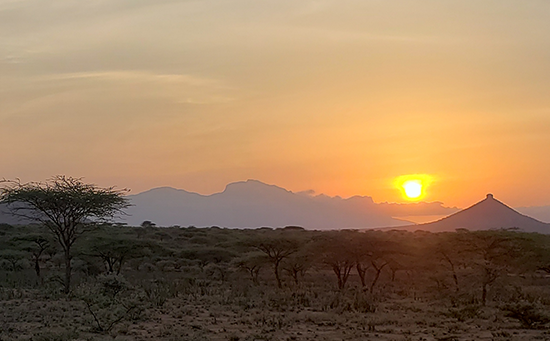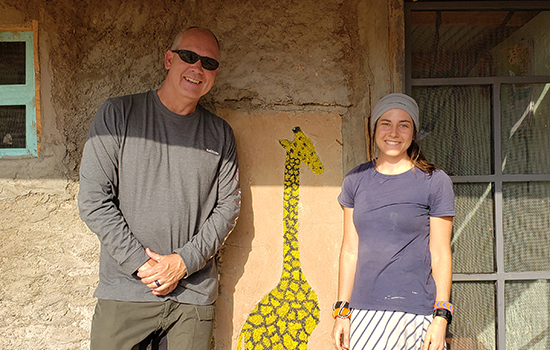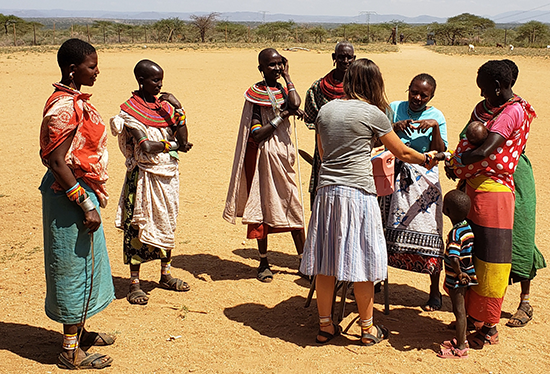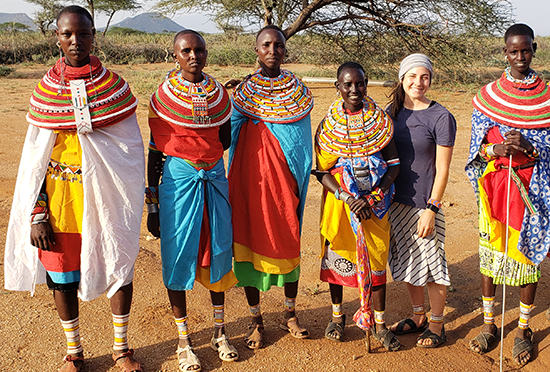
December 2019 -January 2020
On Assignment
------------------
|





Samburu Sunrise
By Curt Holland
I love sunrises and sunsets. I am a morning person, but many times I am not outside when the sun rises. Like many of us, I am more likely to be outside when the sun goes down and have witnessed more sunsets.
I experienced sunset first when I arrived in Kenya, in the area the Samburu people call home. Since the Samburu are nomadic, “home” is hard to pinpoint, but they live about one degree north of the equator. The next morning, to capture some great pictures of the sunrise, I set my alarm. (Even that seems ironic, since the Samburu have no watches or clocks.)
As the sun rose over the mountain peaks with its bright orange glow, I knew the day would be hot once again. It would not be the Missouri, Nashville, or Ecuador heat with which I am familiar but Kazakhstan hot, with a high sun and low humidity. The lack of humidity made sleeping in the hammock at night somewhat cool. Waking up curled in a blanket each morning seemed strange considering how hot the previous day had been.
The beautiful Samburu sunrise reminds the Samburu team another day of ministry calls to them. Located more than 200 miles northeast of Nairobi, this arid place called Sesia is surrounded by high hills and mountain peaks. The hills seem to form a natural boundary around the land of the Samburu and their wandering herds of goats and camels.
Recent rains had kept the acacia trees and scrub brush abnormally green during June and July. The shepherd boys, always in search of food and water for their herds, didn’t have to wander as far for their flocks. However, the harsh climate and scorching sun lead to many of the medical needs attended to each morning in the clinic. “Clinic” may be a bit misleading. A few chairs for the nurse, translator, and the patient under a tarp. This tarp—tied to two poles on the edge of the porch and to the building that serves as kitchen, dispensary, and storage—serves as a sun-guard.



Photo: (top) Author Curt Holland pictured with medical missionary Victoria Little; (middle) Victoria training Samburu women; Victoria with young Samburu warriors.
Roaming children follow and “herd” their livestock all day long. Encountering snakes, stones, and harsh desert conditions, they garner a variety of injuries and wounds. Many “mommas,” as childbearing women are called, face miscarriages because they are also the “burden bearers.” Not only do they carry water to their homes each morning, they also build their dwellings. Men cut down the thorny acacia trees and bushes to form a “living” fence around their communal homes. These circular fences, seen clearly from the air, prevent hyenas and other predators, like leopards, from reaching their livestock
and children.
The medical needs met each morning have built trust and respect among the Samburu for our team of missionaries. The miraculous healings and God encounters through prayer have gained the ear and touched the hearts of the Samburu. Each new incident paves the way for the gospel to be shared and accepted by patients and their families.
Community Health Evangelism (CHE) teaching has begun because of the respect given to God’s faithful servants. Many afternoons, the “mommas” who have completed their morning water chores sit beneath a shade tree to learn about better hygiene and nutritional sources for their families. CHE lessons also have opened doors for a new gathering of believers on Sunday mornings.
Another CHE lesson is given to the children at a local school. This prompted the team to show the Jesus Film to children as part of the Christian Resource Education that takes place in all Kenyan schools. After the movie, a new group of “mommas” asked if CHE outreach could begin in their community.
On any given Sunday, the sun will rise and a group of believers will gather under a tree for fellowship, songs, and Bible storytelling. The Samburu are oral in learning and communication. The Sunday afternoon group, also under a tree, hears a different story from a different Kenyan leader because they are more advanced in the stories of Scripture. At a different tree, on another day during the week, a third group will gather in the shade to repeat the same scene. These Kenyan leaders, believers, and missionaries see people accept the truth of the gospel almost daily.
The sun is only rising on the ministry to the Samburu. Eddy and Amanda Simmons and Victoria Little have been in Sesia just under three years. The water wells dug by the team (with others still to be dug) are making an impact in this dry and thirsty land. Food distribution during a time of drought gained favor with the local chief, whose house can be seen from the front porch of the “clinic.” Community Health Evangelism impacts lives for the long term. However, it is the rising of the Son of God and His gospel, which encompasses everything happening among the Samburu.
This is the greatest Son rise in all the land of the Samburu.
About the Writer: Curt Holland, a former missionary to Brazil, serves as IM’s director of field ministry personnel. He and his wife Mary have three daughters and an adopted son, three
sons-in-law, and three grandchildren. Read more about the work of IM: IMInc.org
|
|

